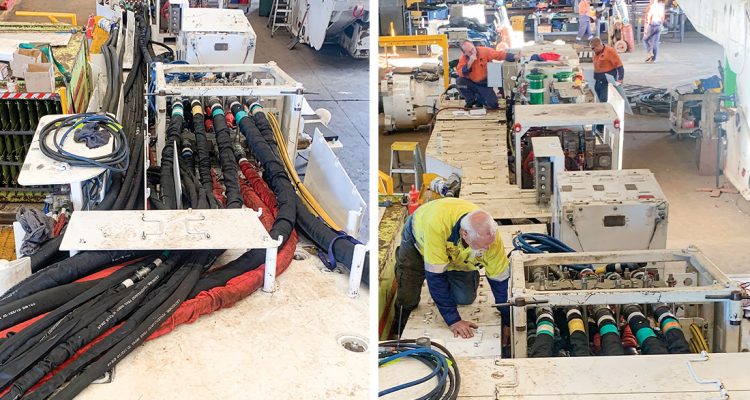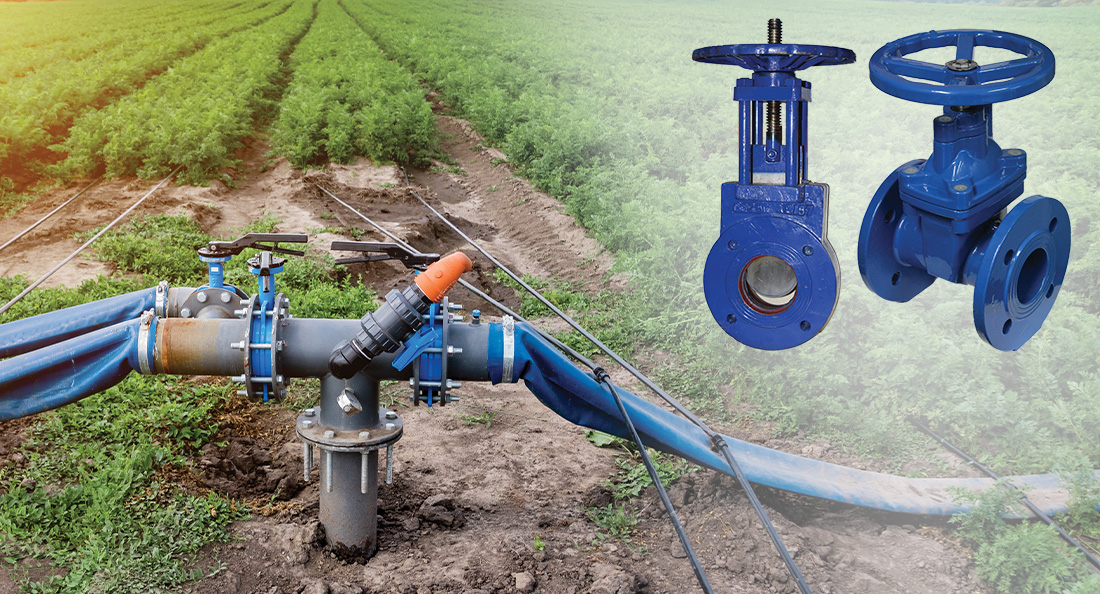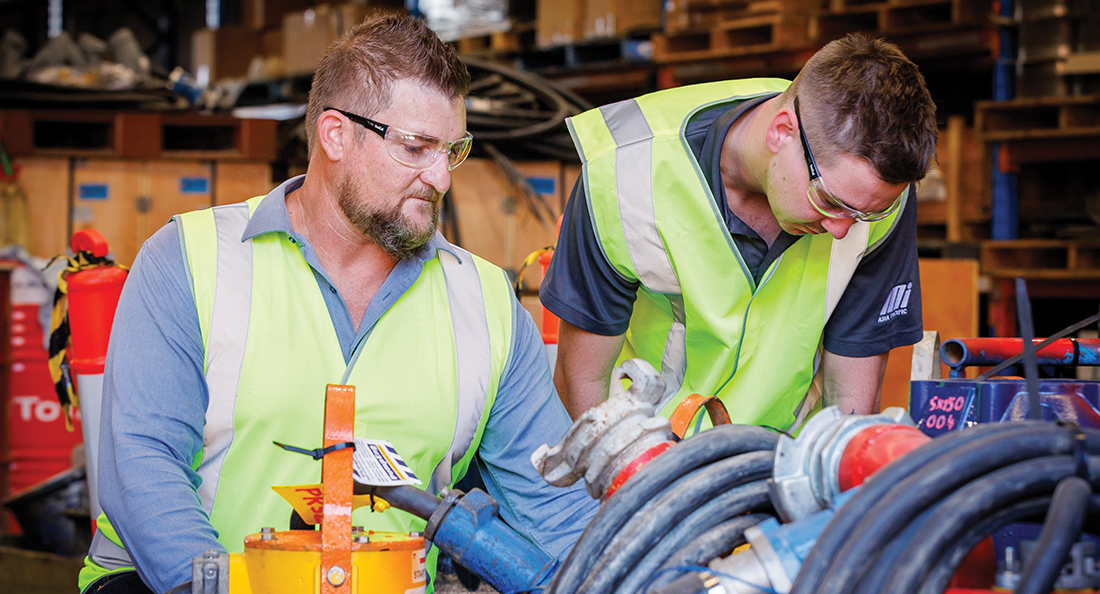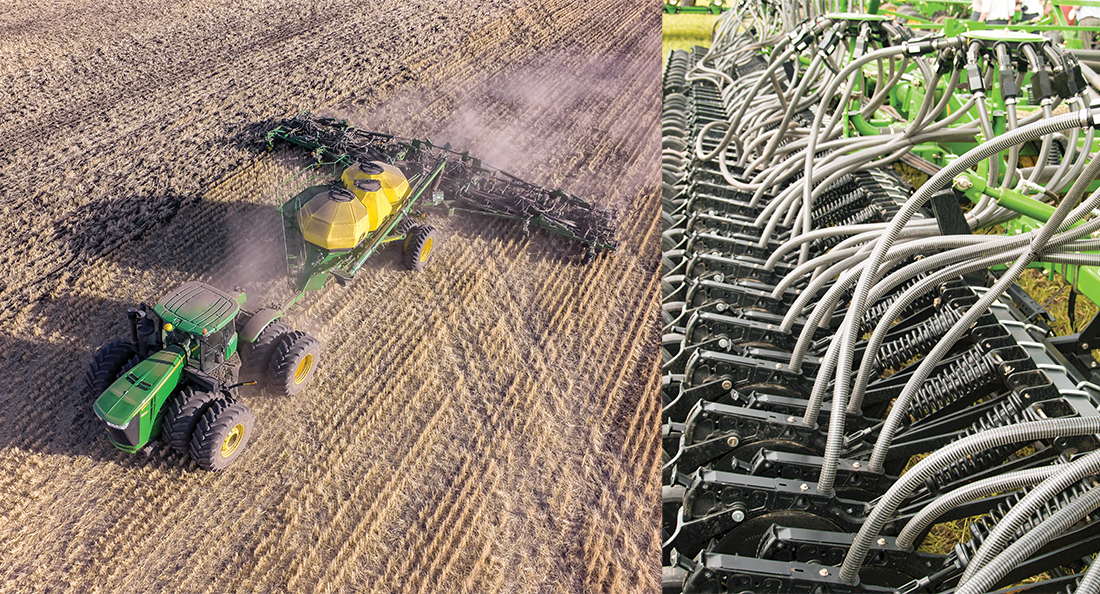Underground mining comes with its own unique set of risks and challenges. Getting the infrastructure right – such as hosing-up a new system – reduces risks to underground operatives and maintains optimal productivity. For almost 20 years the Engineering and Services division of Motion has been coordinating and installing hose-up change-outs for underground mines in New South Wales and Queensland. That’s a lot of hands-on experience. And occasionally they are called in to finish a job when things don’t go to plan.
Underground hose systems deliver hydraulic oil, process emulsion, GP water and compressed air to the diversity of equipment involved in underground longwall mining. The hoses range in size from 19mm (3/4”) to 65mm (2½”); they are rated for the different pressures required and carefully matched to the medium they are conveying and the operating environment of the equipment that will be powering. Hoses are generally colour-coded for contents and operating pressure.
For example, roof supports are powered by a 95% water, 5% hydraulic oil emulsion, and operate at around 400 bar. The longwall shearer runs on 100% hydraulic oil and operates at around 300 bar. A typical system also includes gear oil supply hoses to fill and/or top-up all the gearboxes on a longwall system. Moreover, there are water hoses for cooling and dust suppression and hoses for the foam that is sprayed onto the coal as it comes from the face, before it goes through the crusher.
In addition, there are return hoses for the emulsion circuit and compressed air for maintenance tooling. It is possible to have up to 20 hoses run in any one system.
Installation of the hose system – the hose-up – follows well-established guidelines for safety and efficiency.
The hoses start at the pump station services outlets located in the longwall block and are attached to the longwall’s roof-mounted monorail system (which could be up to 500 metres long). The hoses then transition from the monorail to the beam stage loader (BSL) at the start of the longwall and then another 50 metres to the main gate corner.
From the BSL to the main gate corner the hoses are confined in a unique purpose-built modular channel, designed to sit on top of the longwall system and become part of the infrastructure.
The working height at this point is very low so the compact channel secures and fixes the hose system with the addition of detachable capping that protects the hoses from damage.
Our proven experience with longwalls is recognised and acknowledged throughout the underground mining sector. Motion Engineering and Services longwall specialist was recently called to a Queensland mine to finish-off a hose-up that had been left in limbo following operational changes at the longwall system OEM.
The installation program was already underway; however, final supervision was required, particularly around ensuring that the hoses had been installed correctly as per the hosing diagrams. Updating the relevant Link-One drawings and ensuring the colour-coding on the hoses is in accordance with the mine’s system and the job complied with installation requirements for Queensland underground mines.
In general, the safety and mechanical regulations and requirements for hose-ups in New South Wales and Queensland underground mines are substantially the same; however, there is some variance for Queensland mines.
The new hose system is now underground and working to expectations and regular inspections will ensure the system maintains its operational integrity. The longwall system is usually sent out for inspection and refurbishment at the completion of each longwall block – generally about every 12 months. The hose system will be refurbished and worn parts replaced during that scheduled overhaul program.




